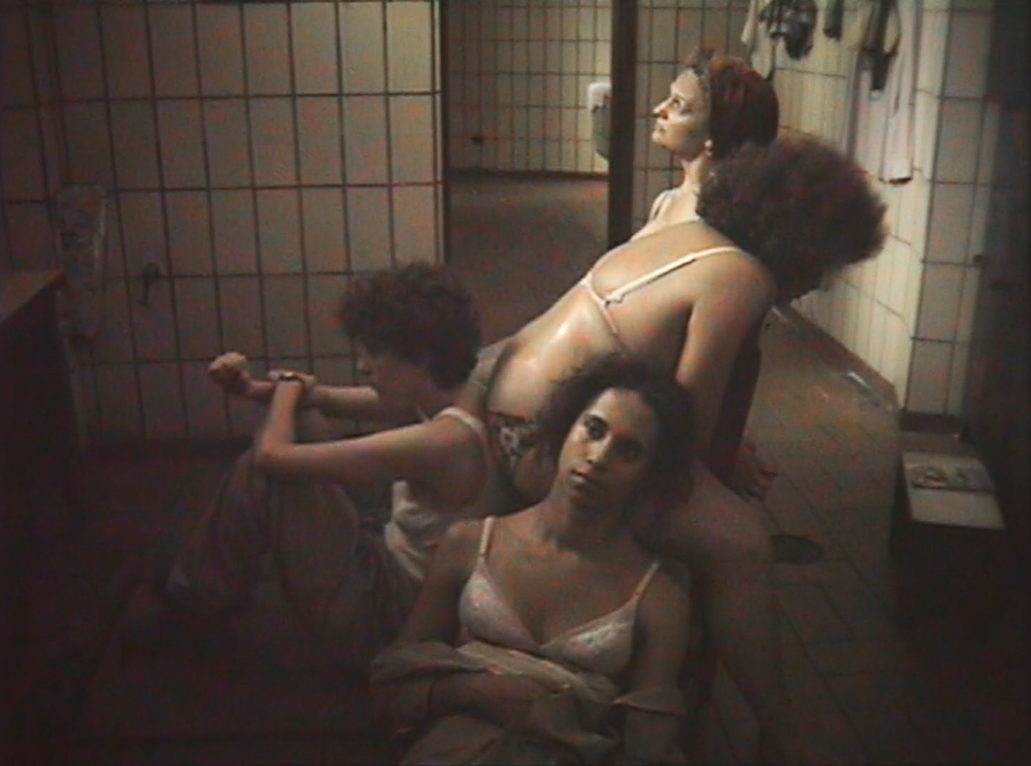The iron clock in the bathroom of a São Paulo factory indicates the time for the break. As Nina Kopko’s short Chão de Fábrica (2021), opens, a radio programme indicates the date set for the scene: 12th of March 1979, a day before the outbreak of the metal workers strike in the ABC (Industrial pole of) São Paulo. The short uses this theme to fictionalize a possible perspective of those who rarely appear as the stars of this period’s stories, depicting the concerns and ideas of four women workers who in some way make up a revolutionary workforce.
In the film, the changing room shared by these women serves as a stage – this is not a flippant comparison, as the short itself is inspired by the play O Pão e a Pedra, by Sérgio de Carvalho. Possibly the bathroom is one of the few safe places in the factory, free of harassment by the bosses and other workers, and there they have lunch, chat, argue and project their hopes. Men cannot enter there, or in the film. When they appear, they are out of frame – voices sometimes planning the strike that will challenge the dictatorship of the time, sometimes disrupting the uncomfortable synchrony of that noisy sanctuary. The intimacy of this space, in the end of summer heat, propitiates unbuttoning overalls, throwing water over arms and backs, painting fingernails and mixing frivolities (Lula: a heartthrob or not?) with more intense discussions about women’s’ role in the demonstrations and what they have to lose when they take on an active part in the workers’ struggle. Thus Nina builds a resistance based on different perspectives regarding femininity, coordinating personalities who compliment diverse positions on the theme.
The idea of dramaturgy helps to reveal the work’s atmosphere, the radio soap narrated by Joana, one of the characters, contributes to the development of this mood. Preceded by a classic soundtrack, which suggests imaginative intervals, the narration leads the film to abandon the idea of the past and begin to exercise the pluperfect tense, that uncertain verbal tense, which nonetheless is full of possibilities. By presenting what tomorrow will bring to these characters, imagining what will happen over the next 40 years, the short not only brings the leading characters to the present day, but also joins the dots of a future that these people helped to create. A future in which a labourer can become president of a country endlessly trying to escape its own ruins.
Maybe this explains the director’s choice of abandoning the VHS aesthetic which sustains most of her narrative, to take on the digital camera, opening up the frame to register, in high definition, what became of these factories: ruins, abandoned machinery, empty spaces. In the end, Nina makes the point that in contrast to what happened to the women, who evolve, each in her own way, the space which confined them will remain frozen in time: the portrait of a capitalism fated to fall apart.
Gabriel Araújo

